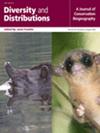Supporting Reintroduction Planning: A Framework Integrating Habitat Suitability, Connectivity and Individual-Based Modelling. A Case Study With the Eurasian Lynx in the Apennines
Abstract
Aim
Reintroducing carnivores is a widely used approach to restore the natural integrity of ecosystems. Species distribution models (SDMs) and connectivity analyses are valuable tools for planning reintroductions and identifying release sites but are rarely combined. We propose a new framework combining SDMs, connectivity modelling and individual-based models (IBMs) to assess the feasibility of various reintroduction scenarios. As a case study, we applied this framework to plan a potential reintroduction of the Eurasian lynx (Lynx lynx) to the Apennines by: (i) assessing niche overlap between potential source and target populations; (ii) integrating habitat suitability and connectivity to select release sites and (iii) evaluating reintroduction outcomes through IBMs.
Location
Apennines, Peninsular Italy.
Methods
We combined niche overlap analysis, ensembles of fine-tuned SDMs and circuit-theory techniques to model connectivity. Then, we integrated suitability and connectivity predictions within a GIS environment to identify the optimal release sites under different scenarios. Finally, we used IBMs to assess population viability, site occupancy and dispersal.
Results
Niche overlap suggested that the Carpathian lynx populations may serve as a valid reintroduction source. Integrating habitat and connectivity models highlighted the most functional sites in the Central (CA) and Northern Apennines (NA). A scenario with individuals released in both CA and NA did not outperform the single-area scenarios. Releasing individuals only in CA showed long-term feasibility but a higher risk of isolation, while release only in NA would not result in viable populations in the long term, despite closer proximity to suitable areas in the Alps.
Main Conclusions
Our framework can help practitioners with integrating functional connectivity within the selection of release sites for species reintroductions. We recommend incorporating demography, as well as dispersal and settlement phases, when evaluating reintroduction scenarios. This approach identifies critical mortality areas, predicts population size, site occupancy and connectivity and enhances decision-making for successful reintroductions.


 求助内容:
求助内容: 应助结果提醒方式:
应助结果提醒方式:


